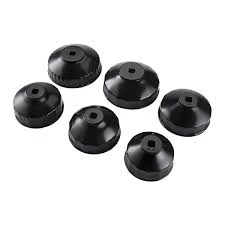Mobile:+86-311-808-126-83
Email:info@ydcastings.com
cast stainless steel parts
Understanding Cast Stainless Steel Parts Properties, Applications, and Advantages
Cast stainless steel parts have become a critical component in a multitude of industries due to their unique properties and versatility. Stainless steel, known for its corrosion resistance, high strength, and aesthetic appeal, is an ideal material for countless applications. The casting process further enhances these properties, allowing for complex shapes and designs that can meet the rigorous demands of various environments.
What is Cast Stainless Steel?
Casting is a manufacturing process where liquid metal is poured into a mold to create a specific shape once it solidifies. When it comes to stainless steel, the casting process enables the production of intricate parts that would be challenging or impossible to achieve through traditional machining processes. Cast stainless steel parts are made from alloyed steel containing at least 10.5% chromium, which enhances its corrosion resistance. Other elements like nickel, molybdenum, and manganese may also be added to alter the mechanical and physical properties of the material.
Properties of Cast Stainless Steel Parts
1. Corrosion Resistance One of the standout features of cast stainless steel is its ability to resist rust and corrosion, making it ideal for harsh environments, such as chemical processing plants and marine applications.
2. High Strength and Durability Cast stainless steel parts exhibit excellent mechanical strength and toughness. This makes them suitable for structural applications which require high performance under stress.
3. Aesthetic Appeal Stainless steel has a clean and polished finish, making it attractive for applications where appearance matters, such as architectural details and consumer products.
4. Temperature Resistance Cast stainless steel can withstand high temperatures, making it suitable for applications in the aerospace and automotive industries where heat might be a concern.
5. Weldability The casting process allows for good weldability, meaning that parts can be easily joined to form larger assemblies, crucial in industries like construction and shipbuilding.
Applications of Cast Stainless Steel Parts
cast stainless steel parts

The applications for cast stainless steel parts are vast and varied. Some common areas of use include
- Automotive Industry Components such as exhaust manifolds, turbocharger housings, and other engine parts benefit from the heat and corrosion resistance of cast stainless steel. - Aerospace High-stress components in aircraft structures and engines are often made from cast stainless steel due to its lightweight and strength characteristics. - Pipelines and Valves Many industries rely on stainless steel castings for their pipelines and valves, particularly in oil and gas, water treatment, and chemical processing.
- Marine Applications Given its resistance to corrosion from saltwater, cast stainless steel is widely utilized in shipbuilding and offshore drilling equipment.
- Architectural Applications Statuary and decorative elements in building and landscaping often use cast stainless steel for its durability and aesthetic qualities.
Advantages of Cast Stainless Steel Parts
1. Cost-Effectiveness Although the initial costs may be higher than other materials, the long life and low maintenance of cast stainless steel parts mean that they can be more economical over time.
2. Customizability The casting process allows for the creation of custom shapes and sizes, making it easier to meet specific design requirements.
3. Efficiency The production of cast stainless steel parts can be streamlined, allowing for faster turnaround times compared to machining processes.
4. Recyclability Stainless steel is highly recyclable without loss of quality, contributing to sustainability and environmental responsibility.
In conclusion, cast stainless steel parts play a crucial role across various sectors due to their remarkable properties and the advantages they offer. As industries continue to demand materials that can perform under challenging conditions while also being cost-effective, the importance of cast stainless steel will only grow. Whether it is in automotive, aerospace, or architectural applications, cast stainless steel components will remain a staple in modern manufacturing, ensuring reliability and excellence in performance.
-
Why Should You Invest in Superior Pump Castings for Your Equipment?NewsJun.09,2025
-
Unlock Performance Potential with Stainless Impellers and Aluminum End CapsNewsJun.09,2025
-
Revolutionize Your Machinery with Superior Cast Iron and Aluminum ComponentsNewsJun.09,2025
-
Revolutionize Fluid Dynamics with Premium Pump ComponentsNewsJun.09,2025
-
Optimizing Industrial Systems with Essential Valve ComponentsNewsJun.09,2025
-
Elevate Grid Efficiency with High-Precision Power CastingsNewsJun.09,2025











